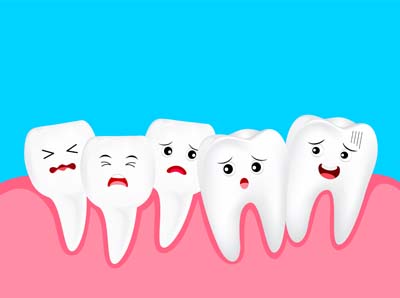Can a Dentist Also Provide Orthodontics?

Dentists and orthodontists both went to dental school, so they can both practice orthodontics, right? Well, that is one way of looking at it. However, orthodontists attend two or three extra years of school and go on to get certified in orthodontics. The extra time orthodontists spend training is used to learn about the diagnosis and treatment of dental and skeletal malocclusions.
While all orthodontists are dentists, not all dentists are orthodontists. Think of orthodontists as specialists and dentists as the general practitioners of dentistry.
Who should you go to for braces and retainers?
If you are wondering why some dentists install braces, it is because they continue to add to their skills and experience over the course of their careers. Some dentists take professional courses and get certified for specific dental procedures.
Dentists who have training and experience with orthodontics can fit braces and other orthodontic appliances. However, crooked teeth may be caused by an underlying skeletal issue that is beyond a dentist’s skill set. When they encounter such situations, the dentist will refer the patient to an orthodontist.
Here are some questions that will help a person decide whether to see a dentist or an orthodontist for their dental problem:
- Is the dentist trained in orthodontics?
- Do they have lots of experience dealing with a particular orthodontic treatment?
- How many such treatments has the person performed?
- Has the dentist ever had to refer a patient to an orthodontist for that particular treatment?
A good dentist will answer these questions openly, taking pride in their training, skill and experience.
Orthodontic treatments that are performed by dentists
After the dentist does a comprehensive evaluation that typically includes X-ray images of the teeth and jaw, they will recommend a suitable orthodontic treatment. Common treatments done by dentists are:
Clear aligners
This treatment straightens teeth with a series of trays. The trays fit tightly over a patient's teeth, forcing them to move into the alignment that the dentist wants. Once the teeth shift to the dentist’s satisfaction, the patient is given a new set of teeth trays that will continue to align the teeth. The process will be repeated until the teeth are straightened.
Fixed braces
A dentist can fit braces on a patient’s teeth to correct dental malocclusions and crooked teeth. At regular intervals, the dentist will adjust the braces as the teeth shift into new positions.
Jaw expanders
Dentists with years of experience who have attained the rank of AGD, Fellows or Masters perform hundreds of orthodontic treatments every year. Such dentists can fit a patient with retainers and jaw expanders.
The bottom line
It is common for dentists to have a specialty. You may find a dentist who is extremely skilled and experienced when it comes to oral surgeries like extraction of impacted teeth or placement of dental implants. That person may not be as skilled when it comes to orthodontics. A good dentist will give you a referral when you need one. When that dentist meets a patient that they cannot help, they will immediately refer the patient to an orthodontist. The dentist will know when to call in the cavalry. If you are dealing with an issue that requires orthodontics, a good dentist will let you know the minute you need a referral.
Request an appointment here: https://familychoicedentistry.com or call Family Choice Dental at (505) 634-5657 for an appointment in our Albuquerque office.
Check out what others are saying about our dental services on Yelp: General Dentistry Services.
Related Posts
A general dentist performs general dentistry services and can serve as the first point of contact for patients who need other types of dental care. Some services, such as dentures, may require a referral to a dentist who focuses on a specific area of dentistry.The general dentist is usually responsible for preventative care, such as…
General Dentistry visits are essential when looking to maintain good oral health. While at-home oral hygiene is an effective way to keep the gums and teeth in good shape, it alone is not enough. Seeing a general dentist at least twice a year for a check-up combined with at-home oral hygiene is the best way…
Many people use the terms dental office and dental clinic interchangeably. The confusion is understandable, but they are not exactly the same thing. Dental offices have to contain a dental clinic, but there are also dental clinics that exist in places other than dental offices.A dental clinic is a place where a dentist performs oral…
PPE per CDC guidance is unique wearable coverings designed to protect dental professionals in Family Choice Dental from exposure to infections, such as the coronavirus. The PPE is worn during dental procedures and when cleaning sterilizing dental instruments. This article answers some questions about PPE per CDC guidance.PPE means personal protective equipment and it is…
